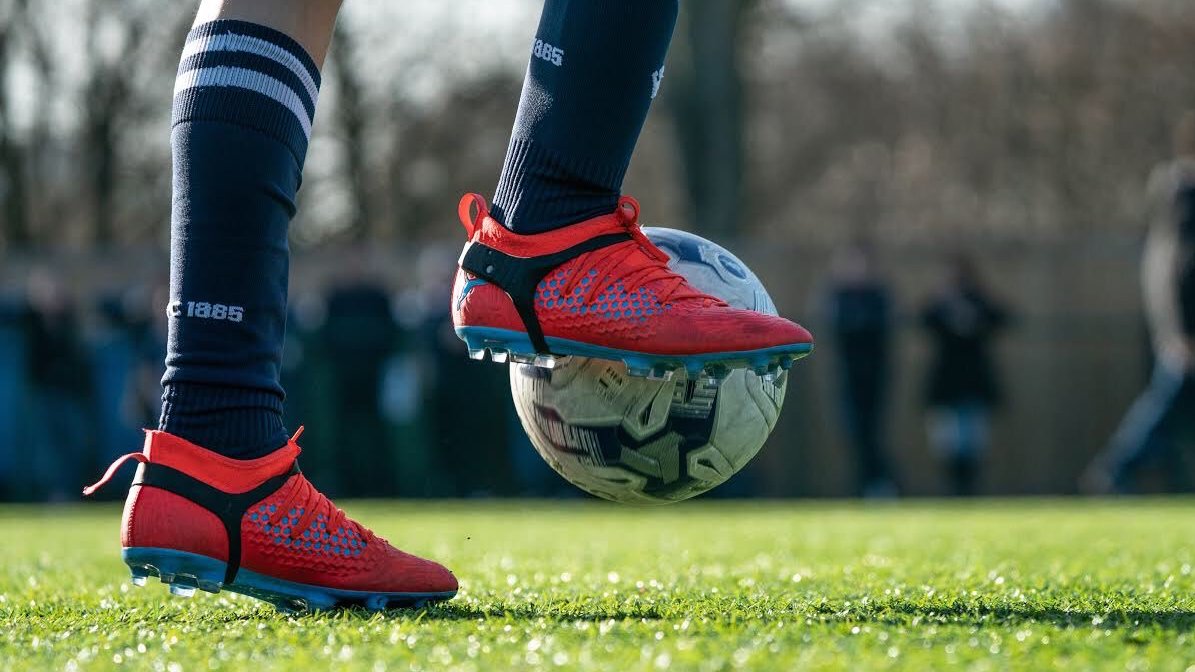New Technology Measuring Every Touch of Ball Could Change High School Soccer Forever

By Chris Hummer, SoccerWire Publisher
High school soccer – or any soccer for that matter – may never be the same again.
At least that was the sense on a recent perfect fall afternoon in the Nation’s capital as Georgetown Visitation girls hosted Bishop O’Connell in non-league girls high school action.
What was different?
It wasn’t that same feeling of rivalry and challenge of the contest that lay ahead. And it wasn’t how the “winner” of the contest would be decided by the biggest statistic of all – goals. (In this case, it was two late goals by O’Connell that relieved the pressure of tight contest to register a 3-1 win for the visiting side.)
 The difference – and what is likely to become a permanent fixture not only soccer, but in many sports in the future – was the use a “wearable” technology to measure the activity and action of the players. And while the professional ranks of all major sports worldwide have been employing data scientist and teams of video analysts for over a decade, technology advancement has now caught up to make just about any data you want accessible and affordable to all levels of the game.
The difference – and what is likely to become a permanent fixture not only soccer, but in many sports in the future – was the use a “wearable” technology to measure the activity and action of the players. And while the professional ranks of all major sports worldwide have been employing data scientist and teams of video analysts for over a decade, technology advancement has now caught up to make just about any data you want accessible and affordable to all levels of the game.
And so the “professionalization” of youth sports continues its onward march.
In this case, the non-league matchup between private high school rivals became the first high school soccer game in the D.C. region where every player on the field was equipped with the “Performance Intelligence Platform” known as PlayerMaker, a new technology discretely attached to the outside of each players’ foot that records their every move and touch of the ball.
As a result, both teams were able to receive detailed reports within minutes of the end of the game, detailing every player’s possession, touches, and passing completion; and over a dozen other “Key Performance Indicators”, or KPIs in industry speak.
The system has been in place for years in Europe with some of the world’s top clubs using them to track players in training sessions, injury rehabilitation, and even in some games. The devices were also recently used by Argentina’s men’s Olympic squad in their match against Mexico. And now, the system has come to American shores, with top MLS Development Academies, College, and professional teams utilizing the new tech for the first time throughout the USA this fall season.
 Comprised of two small devices strapped discretely to each cleat where it does not interfere with the ball, the PlayerMaker system senses every step and can “feel” the vibration when the foot makes contact with the ball. By piecing all of this data together throughout a training session or game, coaches and players can examine team and individual data as they analyze their performance following each practice or game, and then use the ability to set goals and targets in their ongoing development process.
Comprised of two small devices strapped discretely to each cleat where it does not interfere with the ball, the PlayerMaker system senses every step and can “feel” the vibration when the foot makes contact with the ball. By piecing all of this data together throughout a training session or game, coaches and players can examine team and individual data as they analyze their performance following each practice or game, and then use the ability to set goals and targets in their ongoing development process.
The result? Players seemed to concentrate more on how they play because they know they’re being measured.
“The coolest thing about this is the players can’t hide! The players all definitely had a better than average game.” explained Bishop O’Connell head coach Alberto Starace after the win while reviewing the PlayerMaker dashboard of data on the sidelines. “They knew they were being measured, and I think that helped their focus.”
While players’ focus and concentration may go up when something like this is implemented for the first time, it’s reasonable to expect old habits to set in once that newness wears off. But with PlayerMaker, coaches should never be able to hide themselves, as every game and every training session will be recorded for history. There, it can be analyzed by their peers, their bosses, and themselves in an effort to design better training sessions and advanced the development of the individual players.
And the players get a personal report after every session as well, so by the time they get home or out of the showers, they can see their own KPIs and set their own goals without having to wait for that one-on-one conversation with a coach.
“If we had these all the time, it would help with us work with each player on specific areas,” Starace continued. “Just in the data from this one game, I already see things that surprised me about our passing connections, and how many times they’re using their right and left foot.”

And if the data isn’t enough, an added benefit of PlayerMaker is its data can be easily synchronized with most video editing software to instantly splice out each player’s personal possessions, then tagged till your heart’s content by the type of touch on the ball, like only looking at left foot usage for instance.
And to college programs already using the system, and many more planning to adopt it for next season, it seems certain college scouts are going to be asking player and club coaches to see their PlayerMaker data too.
The world is definitely changing quickly, and many new technologies are coming to market focused on capturing the minds and wallets of youth sports programs and parents. But while GPS devices and wearables that assist in video editing deliver some aspects of PlayerMaker’s capability, nothing on the market we’ve found to date combines those capabilities while adding the amazing technical and physical data that can be collected by motion-sensing devices worn on the feet.
What will they think of next?
—-
Disclosure: SoccerWire is compensated via a marketing partnership with Playermaker
SOCCERWIRE MARKETPLACE
- Girls College ID Soccer Camp – Showcase Your Skills!
- Real Colorado Cup 2026
- Join a College Coaches Showcase Camp Today
- MICFootball Punta Cana 2026
- Dana Cup Hjørring 2026
- 15th Annual Loudoun Soccer College Showcase
- OFFICIAL FC BARCELONA SOCCER CAMPS - PROMO CODE: FCBSOCCERWIRE
- New England Copa Surf 2026
- Adidas National Cup 2026
- visitRaleigh.com Showcase Series 2025, hosted by NCFC Youth











